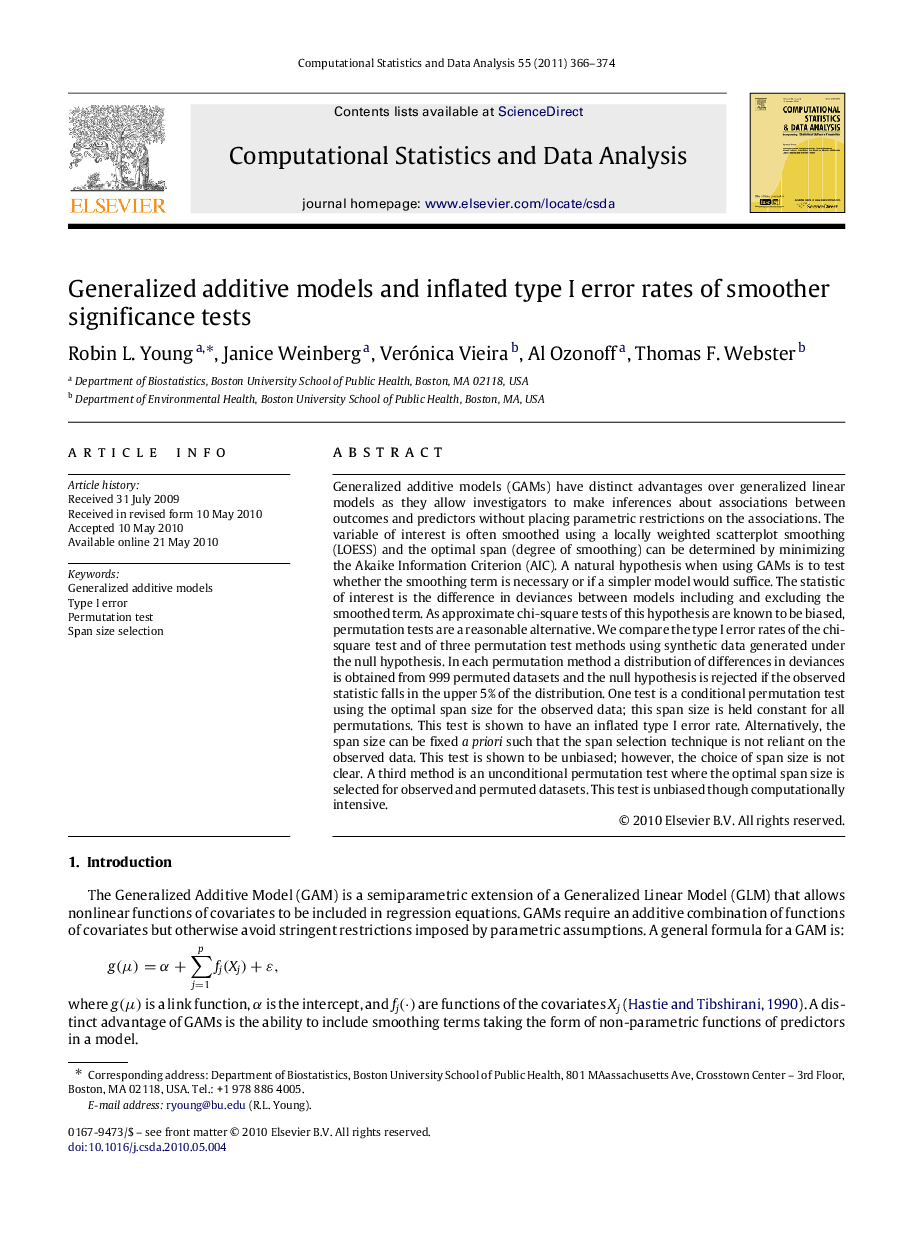| Article ID | Journal | Published Year | Pages | File Type |
|---|---|---|---|---|
| 417676 | Computational Statistics & Data Analysis | 2011 | 9 Pages |
Generalized additive models (GAMs) have distinct advantages over generalized linear models as they allow investigators to make inferences about associations between outcomes and predictors without placing parametric restrictions on the associations. The variable of interest is often smoothed using a locally weighted scatterplot smoothing (LOESS) and the optimal span (degree of smoothing) can be determined by minimizing the Akaike Information Criterion (AIC). A natural hypothesis when using GAMs is to test whether the smoothing term is necessary or if a simpler model would suffice. The statistic of interest is the difference in deviances between models including and excluding the smoothed term. As approximate chi-square tests of this hypothesis are known to be biased, permutation tests are a reasonable alternative. We compare the type I error rates of the chi-square test and of three permutation test methods using synthetic data generated under the null hypothesis. In each permutation method a distribution of differences in deviances is obtained from 999 permuted datasets and the null hypothesis is rejected if the observed statistic falls in the upper 5% of the distribution. One test is a conditional permutation test using the optimal span size for the observed data; this span size is held constant for all permutations. This test is shown to have an inflated type I error rate. Alternatively, the span size can be fixed a priori such that the span selection technique is not reliant on the observed data. This test is shown to be unbiased; however, the choice of span size is not clear. A third method is an unconditional permutation test where the optimal span size is selected for observed and permuted datasets. This test is unbiased though computationally intensive.
